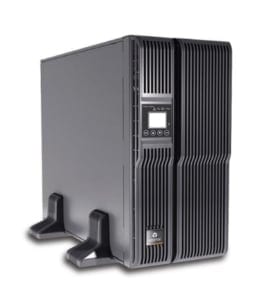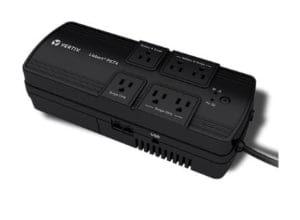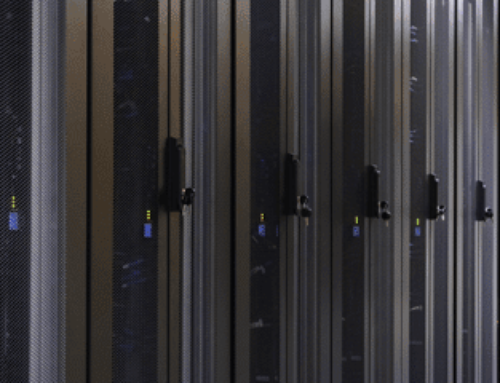Do you know about power anomalies and the potential harm they can have on your business’s equipment?
If you do not use the correct Uninterruptible Power Supply System (UPS) for your operating equipment, you are at risk of damage or destruction, potentially costing you thousands in premature equipment failure.
The true measure for any UPS system is how well it can protect against the nine common power anomalies:
- Power failure – A total loss of utility power.
- Power sag – Short-term low voltage supply of power.
- Power surge (spike) – A short-term high voltage spike that is more than 110 percent.
- Under-voltage (brownout) – Reduced-line voltage for an extended period of a few minutes to a few days. This often happens during the summer months when air conditioners are set higher than normal.
- Over-voltage – An extended period of increased line voltage for a few minutes up to a few days.
- Electrical line noise – A high power frequency power wave caused by radio frequency interference (RFI) or electromagnetic interference (EMI).
- Frequency variation – A loss of stability in the power supply’s normal frequency of 50 or 60 Hz.
- Switching transient – Instantaneous under-voltage in a matter of nanoseconds.
- Harmonic distortion – The distortion of a normal power wave, often transmitted by unequal loads.
Types of Uninterruptible Power Supply (UPS) Systems
1. Online UPS
 This is the safest type of UPS you can buy because it ensures full power to your equipment in the event of a power anomaly.
This is the safest type of UPS you can buy because it ensures full power to your equipment in the event of a power anomaly.
Online UPS is essential for any critical environment where the cost of downtime would be catastrophic. Work environments with mission critical equipment, such as hospitals, require an Online UPS.
An Online UPS system conditions your power 100 percent of the time, supplying only the cleanest power through an inverter. For many facilities, power quality can go unnoticed, impacting the efficiency and longevity of the equipment, resulting in unexpected equipment costs.
An Online UPS safeguards your equipment, saving you money in the long run.
2. Interactive UPS

An Interactive UPS is less expensive and slightly less efficient than an Online UPS. For most businesses with non-mission critical equipment, interactive is “good enough,” providing around 80 percent protection from most types of power anomalies.
For the majority of most businesses in which backups and day-to-day equipment function are necessary, such as an office or retail store, interactive UPS is sufficient and economical. In short, interactive UPS systems may be cheaper, but they won’t provide you the same level of protection as an online double conversion system.
This type of UPS system could protect against a power outage, but it might not protect your sensitive equipment, leaving you vulnerable to other abnormalities and possibly resulting in increased cost in terms of repair or replacement of sensitive equipment.
3. Offline UPS
 An offline UPS is the type of unit that fits underneath your desk and is available at any office supply or electronics store. It is non-specific and limited in its scope of backup.
An offline UPS is the type of unit that fits underneath your desk and is available at any office supply or electronics store. It is non-specific and limited in its scope of backup.
With this type of supply, you risk losing some data and are susceptible to losing power. Averaging roughly around 40 percent protection, an offline UPS acts like a surge protector or power strip; if the power goes out, save your work because the unit will only last for a brief period, with about 5 or 6 minutes on a computer with an offline UPS.
These are considered throw-away units because they don’t do any conditioning, meaning they will be feeding your equipment dirty power that can be detrimental over time.
Which UPS Works Best?
When it comes to keeping your business online, nothing is more important than protecting your power load from blackouts and other electrical issues. While some businesses absolutely require an Online UPS for 100 percent protection, every business needs some form of a UPS system.
At PowerIT, our solutions engineers will review your needs and guide you through selecting the type of UPS system that makes the most sense for your business. Contact us on our website or call 914.263.7351 to learn more.



![How Does UPS Work? [Infographic]](https://poweritny.com/wp-content/uploads/2018/07/how-uninterruptible-power-supply-works_feature-500x383.png)




Leave A Comment